Lectrosonics MTCR Handleiding
Bekijk gratis de handleiding van Lectrosonics MTCR (20 pagina’s), behorend tot de categorie Voicerecorder. Deze gids werd als nuttig beoordeeld door 50 mensen en kreeg gemiddeld 4.0 sterren uit 25.5 reviews. Heb je een vraag over Lectrosonics MTCR of wil je andere gebruikers van dit product iets vragen? Stel een vraag
Pagina 1/20

MTCR
Portable Digital Audio Recorder
INSTRUCTION MANUAL
Rio Rancho, NM, USA
www.lectrosonics.com
Fill in for your records:
Serial Number:
Purchase Date:
Quick Start Steps
1) Install good battery and turn the power on (p. 3, 6).
2) Insert microSDHC memory card and format it with
the MTCR (p. 3, 4).
3) Timecode jam source (p. 7, 8).
4) Connect microphone or audio source.
5) Set input gain (Mic Level p. 8).
6) Select record mode (p. 9).
7) Set output level (HP Volume p. 8).
8) Begin recording (p. 5-9).
microSDHC Logo is a trademark of SD-3C, LLC
CAUTION: See card formatting
warning on page 4.

MTCR
LECTROSONICS, INC.
2
Introduction
Congratulations on your purchase of the MTCR Digital Recorder. On occasion, there is a need to record audio in
circumstances where a traditional full sized recorder is impractical. Whether it be an extreme sport, a public speak-
ing event, a wedding or a next-to-impossible location sound recording, the MTCR is designed for the difficult audio
capture. When talent is at an extreme distance or using a wireless microphone is not practical (knights in armor come
to mind), the MTCR can travel with your subject and record professional quality audio, synchronized with timecode.
The recorder is unobtrusive and easily hidden in garments and costumes and easy to conceal when used as a “plant”
microphone to capture environmental or location sound.
Broadcast Wave Format
With a timecode jam at the start of the production, the audio data file contents include a timing reference to make it
easy to synchronize them in the timeline. The industry standard BWF/.WAV file format is compatible with essentially
any audio or video editing software.
Versatility
The MTCR can be tethered to a camera to capture a higher quality or backup audio recording. The input connector is
the industry standard TA5M jack that accepts any mic or line level signal, and provides bias voltage to power a wide
variety of electret lavaliere microphones. The input connection and wiring is compatible with microphones pre-wired for
“compatible” and “servo bias” configurations to feed 5-pin inputs on Lectrosonics wireless microphone transmitters.
Setup and adjustment is made through an intuitive interface provided by the keypad and LCD. In keeping with typical
Lectrosonics mechanical designs, the housing is machined from a solid aluminum billet for the ruggedness needed in
field production.
Table of Contents
Quick Start Steps 1 .................................................................
Introduction 2 ............................................................................
Broadcast Wave Format ....................................................... 2
Versatility 2 ..............................................................................
Battery Installation 3 ................................................................
Compatibility withmicroSDHC memory cards 3 ....................
Installing the Card 4 .................................................................
Formatting the SD Card 4 ........................................................
IMPORTANT 4 ..........................................................................
iXML HEADER SUPPORT 4 ..................................................
Features and Controls 5 ..........................................................
Operating Instructions 6 ..........................................................
Powering On 6 ........................................................................
Powering Off 6 ........................................................................
Main Window ........................................................................ 6
Recording Window ............................................................... 6
Playback Window ................................................................. 6
Navigating Menus 7 ..................................................................
Timecode... .......................................................................... 8
Mic Level 8 ..............................................................................
HP Volume ........................................................................... 8
Scene & Take ...................................................................... 8
SD Card... ............................................................................ 8
Settings... ............................................................................. 9
Firmware Updates 9 .................................................................
Recovery Process 10 .................................................................
Copying Recordings to a Computer 11 .....................................
PDRRemote 12 ............................................................................
5-Pin Input Jack Wiring 13 .........................................................
Microphone Cable Terminationfor
Non-Lectrosonics Microphones.................................... 14
Timecode Jack Wiring ...........................................................14
Wiring Hookups for Different Sources 15 ................................
Included Accessories 16 ............................................................
Additional Accessories 16 .........................................................
Specifications 17 ........................................................................
Available Recording Time .....................................................17
Service and Repair 19 ................................................................
Returning Units for Repair 19 ...................................................

Portable Digital Recorder
Rio Rancho, NM 3
Battery Installation
The audio recorder is powered by a single AAA Lithium
battery for 6 hours of operation.
Zinc-carbon batteries marked “heavy-duty” or “long-
lasting” are not adequate.
NOTE: Although alkaline batteries will work in
the MTCR, we strongly recommend that they
be used only for short-term testing. For any
actual production use, we recommend the use of
disposable lithium AAA batteries.
Push inward on the release tabs to open the door.
Battery
polarity
markings
Press tabs to
open door
Insert the battery according to the markings inside the
battery compartment door. The (+) pos. end of the bat-
tery is oriented as shown here.
CAUTION:
Danger of explosion if battery is
incorrectly replaced.
Replace only with the same or equivalent type.
Compatibility with
microSDHC memory cards
Please note that the MTCR and SPDR are designed
for use with the microSDHC memory cards. There are
several types of SD card standards (as of this writing)
based on capacity (storage in GB).
SDSC: standard capacity, up to and including 2 GB –
DO NOT USE!
SDHC: high capacity, more than 2 GB and up to and
including 32 GB – .USE THIS TYPE
SDXC: extended capacity, more than 32 GB and up to
and including 2 TB – DO NOT USE!
SDUC: extended capacity, more than 2TB and up to
and including 128 TB – DO NOT USE!
The larger XC and UC cards use a different formatting
method and bus structure and are NOT compatible
with the MTCR recorder. These are typically used with
later generation video systems and cameras for image
applications (video and high resolution, high speed
photography).
ONLY microSDHC memory cards should be used. They
are available in capacities from 4GB to 32GB. Look for
the Speed Class 10 cards (as indicated by a C wrapped
around the number 10), or the UHS Speed Class I
cards (as indicated by the numeral 1 inside a U sym-
bol). Also note the Logo.microSDHC
If you are switching to a new brand or source of card,
we always suggest testing first before using the card on
a critical application.
The following markings will appear on compatible
memory cards. One or all of the markings will appear on
the card housing and the packaging.
UHS Speed Class I Stand-alone
Speed Class 10
UHS Speed Class 1
UHS Speed Class I
Accompanying
microSDHC logo
microSDHC Logo is a trademark of SD-3C, LLC
Product specificaties
| Merk: | Lectrosonics |
| Categorie: | Voicerecorder |
| Model: | MTCR |
Heb je hulp nodig?
Als je hulp nodig hebt met Lectrosonics MTCR stel dan hieronder een vraag en andere gebruikers zullen je antwoorden
Handleiding Voicerecorder Lectrosonics

15 November 2023
Handleiding Voicerecorder
- Motorola
- Speco Technologies
- Humax
- Abus
- Syscom
- AVTech
- Sangean
- RCA
- Philips
- LevelOne
- Marantz
- Yamazen
- Sanyo
- D-Link
- Profoon
Nieuwste handleidingen voor Voicerecorder
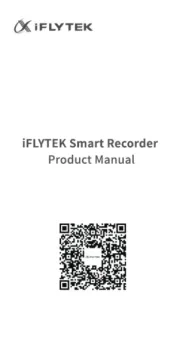
28 Juli 2025
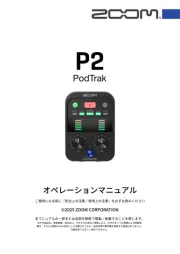
15 Juli 2025
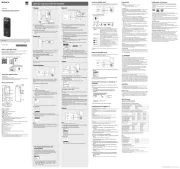
6 Juli 2025
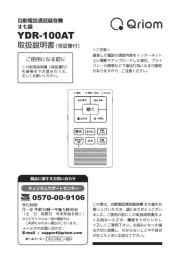
6 Mei 2025
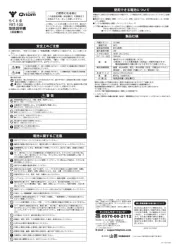
5 Mei 2025
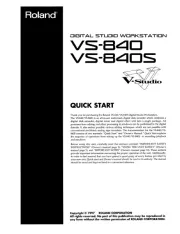
18 April 2025

16 April 2025

16 April 2025

16 April 2025
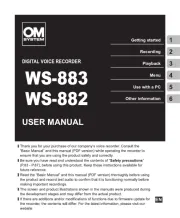
10 April 2025